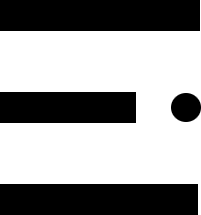Understanding the Different Types of 3D Scanners
Introduction to 3D Scanners
3D scanning technology has revolutionized various industries by enabling the precise capture of the physical world in digital form. From manufacturing to healthcare, 3D scanners are employed to create accurate models for a myriad of applications. Understanding the different types of 3D scanners can help you choose the right tool for your specific needs.
Laser Triangulation Scanners
Laser triangulation scanners are among the most commonly used 3D scanning devices. These scanners work by projecting a laser beam onto the object and capturing the reflection with a sensor. The data is then triangulated to create a 3D model. Laser triangulation scanners are known for their high accuracy and are often used in industrial settings for quality control and reverse engineering.
Structured Light Scanners
Structured light scanners use a different approach by projecting a pattern of light onto the object. Cameras then capture the deformation of the pattern to calculate the object’s dimensions. These scanners are highly accurate and can scan large areas quickly. They are commonly used in the entertainment industry for creating digital assets and in medical fields for prosthetics and orthotics.
Photogrammetry
Photogrammetry involves taking multiple photographs of an object from different angles and using software to stitch these images together into a 3D model. This method is highly versatile and can be used with standard cameras. While it may not offer the same level of accuracy as laser or structured light scanners, it is cost-effective and accessible, making it ideal for hobbyists and small businesses.
Contact Scanners
Contact scanners, also known as touch probes, physically touch the object to capture its geometry. These scanners are incredibly accurate and are often used in applications where precision is paramount, such as in the aerospace and automotive industries. However, they are slower compared to non-contact scanners and may not be suitable for delicate or soft objects.
Time-of-Flight Scanners
Time-of-flight (ToF) scanners measure the time it takes for a laser or light pulse to travel to the object and back. This data is used to calculate the distance and create a 3D model. ToF scanners are capable of scanning large areas quickly and are often used in architecture, construction, and archaeology.
Handheld Scanners
Handheld 3D scanners are portable devices that offer flexibility and ease of use. They can employ various technologies, including laser triangulation, structured light, and photogrammetry. These scanners are ideal for on-the-go scanning and are commonly used in fields like forensics, cultural heritage preservation, and custom manufacturing.
Choosing the Right 3D Scanner
When selecting a 3D scanner, consider factors such as accuracy, speed, cost, and the specific requirements of your application. For example, if you need high precision for industrial applications, a laser triangulation or contact scanner may be the best choice. On the other hand, if you need to scan large areas quickly, a time-of-flight scanner might be more suitable.
Conclusion
Understanding the different types of 3D scanners is crucial for making an informed decision. Each type has its unique advantages and is suited for different applications. By evaluating your specific needs and the capabilities of each scanner, you can choose the right tool to achieve your goals.

